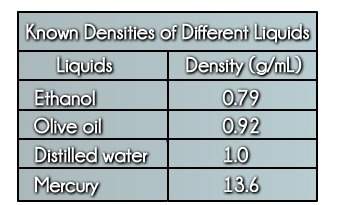
Physics, 08.12.2019 02:31 laniflower6
Imagine two billiard balls on a pool table. ball a has a mass of 2 kilograms and ball b has a mass of 3 kilograms. the initial velocity of ball a is 9 meters per second to the right, and the initial velocity of the ball b is 6 meters per second to the left. the final velocity of ball a is 9 meters per second to the left, while the final velocity of ball b is 6 meters per second to the right.
1. explain what happens to each ball after the collision. why do you think this occurs? which of newton’s laws does this represent?
2. what can you say about the total momentum before and after the collision?
3. what do you think would happen to the velocity of each ball after the collision if the masses and initial velocities of each ball were the same?
4. the mass of ball a is 10 kilograms and the mass of ball b is 5 kilograms. if the initial velocity is set to 3 meters per second for each ball, what is the final velocity of ball b if the final velocity of ball a is 2 meters per second? use the elastic collision equation to find the final velocity of ball b. assume ball a initially moves from right to left and ball b moves in the opposite direction. identify each mass, velocity, and unknown. show your work, including units, and indicate the direction of ball b in your answer.
5. if the mass of each ball were the same, but the velocity of ball a were twice as much as ball b, what do you think would happen to the final velocity of each ball after the collision? to answer this question, create a hypothesis in the form of an if-then statement. the “if” is the independent variable, or the thing that is being changed. the “then” is the dependent variable, or what you will measure as the outcome.
( show your work if you can)

Answers: 2
Another question on Physics

Physics, 22.06.2019 11:00
1.)the isotope cobalt-60 has a nuclear mass of 59.933820 u calculate the mass defect of cobalt-60 using the following information. mass of proton: 1.007825 u mass of neutron: 1.008665 u 1 u = 931.5 mev 2.)the isotope cobalt-60 has a nuclear mass of 59.933820 u calculate the binding energy of cobalt-60 using the following information. mass of proton: 1.007825 u mass of neutron: 1.008665 u 1 u = 931.5 mev 3.)the isotope cobalt-60 has a nuclear mass of 59.933820 u calculate the binding energy per nucleon of cobalt-60 using the following information. mass of proton: 1.007825 u mass of neutron: 1.008665 u 1 u = 931.5 mev
Answers: 3

Physics, 22.06.2019 14:40
The experiment done in lab is repeated, using a ball that has unknown mass m. you plot your data in the form of f 2 versus m/l, with f in rev/s, m in kg, and l in m. your data falls close to a straight line that has slope 3.19 m/(kg · s2). use g = 9.80 m/s2 and calculate the mass m of the ball.
Answers: 1

Physics, 23.06.2019 01:00
What electron configurations do atoms usually achieve by sharing electrons to form covalent bonds?
Answers: 3

Physics, 23.06.2019 01:30
Imagine that the rightward current flows in the rod for a short time. as a result, what will the net charge on the right and left ends of the rod become? left end negative and right end positive left end negative and right end negative left end negative and right end nearly neutral left end nearly neutral and right end positive both ends nearly neutral
Answers: 3
You know the right answer?
Imagine two billiard balls on a pool table. ball a has a mass of 2 kilograms and ball b has a mass o...
Questions

English, 26.03.2020 23:53

Mathematics, 26.03.2020 23:53

Mathematics, 26.03.2020 23:53



Mathematics, 26.03.2020 23:53

History, 26.03.2020 23:53



Mathematics, 26.03.2020 23:53

Chemistry, 26.03.2020 23:53

Mathematics, 26.03.2020 23:53


Business, 26.03.2020 23:53



Biology, 26.03.2020 23:54

Mathematics, 26.03.2020 23:54


Mathematics, 26.03.2020 23:54




